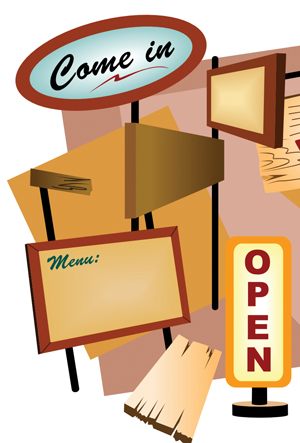
An Easy Shop
November 11, 2008
By Michelle Brisebois
Is your bakery an “easy shop”? Are customers able to come in the front
door and know exactly where to look to find what they’re after? Does
your signage entice folks to buy more, buy now and buy often?
Merchandising is part art and part science, and one of the biggest
mistakes we can make as retailers is arranging our stores according to
our business needs rather than our customers’ needs.
 |
Is your bakery an “easy shop”? Are customers able to come in the front door and know exactly where to look to find what they’re after? Does your signage entice folks to buy more, buy now and buy often? Merchandising is part art and part science, and one of the biggest mistakes we can make as retailers is arranging our stores according to our business needs rather than our customers’ needs.
The other big mistake we make is approaching merchandising as a type of decorating exercise. A pretty store isn’t necessarily a hard-working store and you want your store to function like a four-walled salesperson. High-priced consultants and plan-a-grams aren’t necessary to achieve merchandising bliss. With a few key guidelines and some common sense, your operation can help convert shoppers into buyers.
In the world of retailing psychology, shoppers and buyers are two very different species. A shopper is a consumer who is in the exploratory stage. They’re weighing their options, doing research and trying to decide if they want to buy the item you’re selling. When that shopper hands over their hard-earned money, a shopper is “converted” into a buyer. Conversion rate is the statistic representing how many shoppers then decide to purchase from you. You might get tons of folks walking into your bakery but if they tend to go sideways on you and leave without buying something, chances are your merchandising could use a face-lift.
Let’s look at the shopping process through its logical sequence to identify some key ways you can improve your merchandising/communications strategy.
WAY FINDING
Large department stores are adept at using signage to help customers know which direction to go in to get what they want. Sometimes, smaller stores assume that because everything is within eyesight; way finding isn’t necessary. But nothing could be farther from the truth.
You need to think about how customers decide to choose their baked goods. Is it by day part or taste profile? You may want to create large signage that hangs from the ceiling with headings such as “lunch” and “snacks.” You could also say “sweets” or “breads.” This helps move the consumer to an area of the store where he or she will find like products. Underneath the “breads” heading you can then create signage that says “sandwiches and burgers,” “soft and chewy” or “crusty.”
Think in terms of hierarchy. The main message is “bread” and then, to a lesser extent, the type of bread. You’ll want the main message to be bigger and bolder to draw shoppers over to the display. The signage at the display doesn’t need to scream as loudly as the initial way finding does. Signs here can be smaller as long as they’re clear and easy to see.
PRICING
People want to know how much stuff costs. Make sure that prices are clear and large. Put the prices in a different colour so they jump out against the rest of the copy. If something is on sale, usually the best thing to do is to say it like it is and use the heading “sale.” You can encourage prompt action (conversion) by saying “limited time offer” or “limited quantities.” Nothing gets folks stirred up faster than the thought of missing out on something. It’s also a good idea to clearly show how much they’re saving. Put the old price up with the word “was” and cross out the regular price, putting the sale price with the word “now” next to it. Drive the point home by stating “save $3.” Now three messages reinforce what a great deal it is.
NEW AND TRENDY
Take a page from bookstores (pun intended). Don’t you find yourself walking straight to the bestsellers section? Why is that? It’s because you want to know what others think is popular. Take an area of your store and create a bestsellers section. You can put a major way-finding sign that says “new and popular.” Here you can arrange your top 10 bestsellers in order of their popularity. When you have something new, make sure you trumpet this fact with a bright sign that says so. People love to discover things and then tell their friends. Proper merchandising will make it easier for them to do so. If you’ve got an item on tasting that day, put a sign next to where it’s displayed that says, “on tasting today.” If a customer is looking at an item trying to decide whether or not to buy it, a taste will likely seal the deal.
By implementing a communications strategy to your merchandising you’ll be off to a great start. It’s about noticing what people ask help for when they shop your store. If you’re hearing the same questions over and over again, ask yourself if your in-store signage could be working harder for you. The key is to welcome them as shoppers and then to watch them leave as buyers.
Michelle Brisebois is a marketing professional with experience in the food, pharmaceutical and financial services industries. She specializes in helping companies grow their brands and can be reached at briseboismichelle@sympatico.ca.
Print this page
Leave a Reply